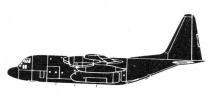Incident Overview

Description
The Caravelle operated on a flight from Stockholm-Arlanda Airport, Sweden to Alicante in Spain. The takeoff from runway 08 was initially normal but the nose pitched down at a height of 10 m, several seconds after lifting off the runway. The first officer noted that the airspeed indicators showed correct values ??and that the engine instruments indications appeared normal. The aircraft continued to float above the runway and the captain thought he was noticing a new tendency to descend. He elected to abort the takeoff and reduced engine power. The nose landing gear hit the runway hard and bounced. The aircraft then touched down hard on the main landing gear. Both main gear legs penetrated the wings, causing a fuel spill. Fuel entered the engines and a fire erupted. The aircraft slid off the runway and came to rest on a snow covered field. All occupants evacuated from the aircraft using the forward right service door as all other doors were unusable due to the fire. Probable cause (translated from Swedish): The pilots perceived disturbances in the vertical plane as if a severe height error occurred immediately after the aircraft had lifted off the runway. They therefore chose to abort the flight, which resulted in the aircraft crashing. Contributing causes: a) An incorrectly activated pitch rectifier immediately after rotating. b) Nitrogen gas in the hydraulic lines that affected the rudder feeling. c) If ice and/or snow had been present on the top of the stabilizer, a disturbed air flow around the stabilizer may have contributed
Primary Cause
Faulty pitch rectifier immediately after rotation, leading to incorrect vertical plane perception.Faulty pitch rectifier immediately after rotation, leading to incorrect vertical plane perception.Share on:





